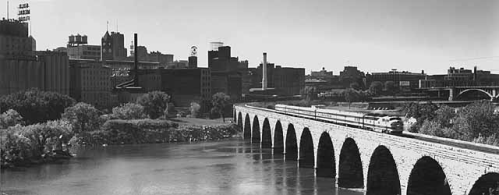Via an August 16 e-announcement from Gamut Gallery:
September 10 - October 9, 2021
C4W:2021 Elemental - a group exhibition that invites us to drop down from the chaos into the essential foundation of existence as life twists & changes around us.
.
C4W:2021 Features: Aidan Dillon, Alexandra Beaumont, Alondra M. Garza, Atzín Rayas, Ayana Figueroa, Ben DiNino, Ben Hering, Benjamin Wuest, Bo Young An, Buddah Jankey, Caryn Ann Bendrick, Christopher Harrison, Christopher Palbicki, CL Martin, Corinne Teed, Daniel Allyn Lee, Derek Meier, Emily Forbes, Helene Woods, Human Shaped Animal, Ilya Natarius, Ivonne Yáñez, Jacob Docksey, Jessica Kitzman, Jes Lee, Jordan Wiebe, Jorie Kosel, Kat Moon, Katie Robinson, Kristine Fretheim, Laurie Borggreve, Liza Ferrari, Lucy Comer, Lynda Mullan, Madison Rubenstein, Maria Quinn, Margaret Vergara, Nate Woodard, Sarah M. Sosa, Tchana Pierre, & Tiffany Lange

Our annual Call-4-Work exhibition is not a show that influences what art should be. Instead, the chosen guest curator brings their unique perspective and interpretation of the submitted works ranging the full “Gamut” of visual media. When Cándida González accepted the invite to curate this year’s C4W:2021, they went in as a blank canvas and let the artwork choose them, empowering the 197 artists to lead the way through all 836 submissions.Through our guest curator’s lens and perspective, this body of work presented the theme Elemental.
“We are living in a portal moment in time, transporting between two worlds, strapped into a rollercoaster ride that we didn’t even know we were in line for. As everything twists and changes arounds us, we reach for the things that stay constant, the things that we know, the building blocks of life.” - Cándida González
This year’s group exhibit will feature 43 artworks that Cándida has chosen to represent one of the foundational blocks of life, from the classical elements and human connections to life and death. The roots of all existing matter – earth, air, water and fire – are essential principles of life, each possessing an energy that when summoned has the power to ground us and heal during times of turmoil. For Cándida, these selected works embody a form of elemental energy that invites us to drop down from the chaos into the essential foundation of existence as life twists & changes around us. These artworks all create roots in the state of being that we return to inorder to help us make sense of the confusion. - Join the FB Event: C4W:2021 - Elemental curated by Cándida González - Visit the exhibit online: GamutGalleryMpls.com
* * * * PUBLIC OPENING NIGHT: * * * *
Friday, September 10 / 6-9pm • $7, FREE for members
Featuring 42 Artists, Icy Icy Baby Shaved Ice Truck & DJ FNK
• Pre-sales available and recommended
• Entry will be available at the door
• Masks required indoors
Returning this year, there will be two “Best in Show '' awards. One will be selected by the guest curator and the other by opening night attendees. Both winners will be awarded $100 cash and Platinum Memberships to Gamut Gallery ($400 value). You will not want to miss the opportunity to help one of these artists take the best in show.
* * * * C4W:2021 ELEMENTAL ARTIST TALK * * * *
Wednesday, September 22nd / 7pm • $5 pre-sales, $7 door, FREE for members
Featured Artists: Alondra M. Garza, Benjamin Wuest, Katie Robinson & Tchana Pierre
• Pre-sales available and recommended
• Entry will be available at the door
• Masks required indoors
C4W guest curator, Cándida González, and Gamut Gallery’s director, Cass Garner, sit down for a conversation with four C4W artists to share about their processes, ideations and perspectives on current events.
* * * * ABOUT THE CURATOR * * * *
Cándida González is a queer, non-binary Puerto Rican native of South Minneapolis, they studied Latin American Art and History at The Evergreen State College in Olympia, WA, and went on to get their M.Ed. at The University of Minnesota in 2003. In their 15 years of arts education work in Minneapolis they worked on building art programs that focused on equitable arts opportunities, inclusivity of underserved populations, and deeper, culturally relevant arts experiences for youth and communities of color. Through their work they have also focused on providing opportunities and development for emerging artists of color. They approach their work by centering at the intersection of art, activism, healing and personal/community empowerment. They are deeply invested in the concept of using art and community design as tools to wage love and healing. Currently Gonzalez facilitates nationwide the Making it Public workshop series for Forecast Public Art, participates in select local arts and healing initiatives and creates mixed-media jewelry under the name Las Ranas Jewelry.
* * * * GALLERY & GIFT SHOP OPEN HOURS * * * *
FREE open hours: Wednesday - Friday, 11am - 6pm; Saturday 11am - 4pm
Gamut Gallery is open without capacity restrictions for in-person viewing of the exhibition. We are available by appointment, please request an appointment 48 hours in advance.
 Tuesday, August 17, 2021 at 6:09PM |
Tuesday, August 17, 2021 at 6:09PM |  Becky Fillinger |
Becky Fillinger | 



 Q: How may we follow your news?
Q: How may we follow your news?














































